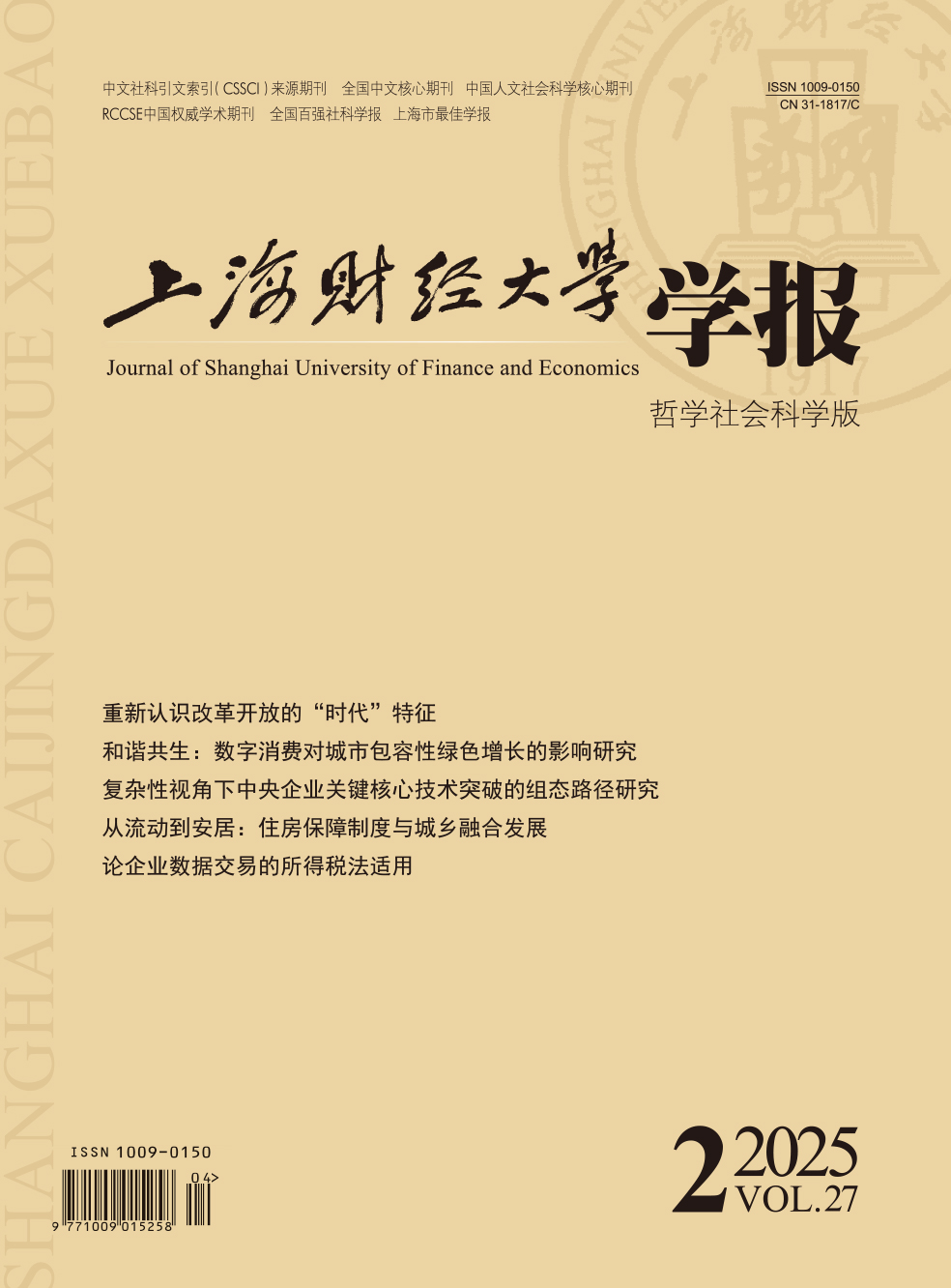Improving the quality and efficiency of financial services in the real economy is the key to driving the high-quality development of the Chinese economy. With the development of information technology, the in-depth integration of digital technology and finance is the general trend. Whether digital finance, a new financial format, can empower the production efficiency of enterprises and promote the high-quality development of enterprises has become the focus of attention. On the one hand, digital finance has stronger geographical penetration and low-cost advantages, which can broaden the boundaries of financial services and achieve efficient allocation of resources; on the other hand, the “silver effect” triggered by digital finance has weakened the monopoly power of banks. Relieving the dilemma of “difficult and expensive financing” of enterprises can help enterprises increase R&D investment and promote technological innovation, which is the endogenous driving force for the improvement of total factor productivity. It is different from the existing literature discussing the mitigation effect of financing constraints and the effect of technological innovation in digital finance. This paper extends the logical chain of the study to the total factor productivity of enterprises. Under the panoramic logical framework of “digital finance-enterprise total factor productivity”, based on the theory of endogenous growth, and using China’s 2011-2017 A-share non-financial listed companies as a sample for empirical testing, this paper combines mathematical derivation and logical reasoning to identify the path and key nodes of digital finance influencing enterprise total factor productivity. The research finds that: (1)Digital finance has significantly improved the total factor productivity of enterprises. After dealing with endogenous problems and a series of robustness tests, this conclusion is still valid.(2)“Financing costs”, “financing constraints” and “technical innovation” are key nodes on the path of “digital finance-enterprise total factor productivity”. Digital finance promotes technological innovation by alleviating the dilemma of “expensive financing” and “difficult financing” of enterprises, thereby enhancing the total factor productivity of enterprises.(3)Further embedding multiple constraint elements in the research framework of “digital finance-enterprise total factor productivity”, it is found that the digital financial structure has a heterogeneous impact on the total factor productivity of enterprises; digital finance has a stronger effect on improving the productivity of innovative enterprises, enterprises with higher asset-liability ratios, enterprises in the secondary and tertiary industries, and enterprises in areas with developed traditional finance and high levels of information technology. Accordingly, the country should pay attention to the productivity improvement effect of digital finance, and create a good external environment to further promote the development of digital finance. On the premise of maintaining the bottom line of systemic financial risks, more policy support should be given to digital finance, and each region should implement differentiated digital financial service strategies based on regional resource endowments and industrial development status.
 / Journals / Journal of Shanghai University of Finance and Economics
/ Journals / Journal of Shanghai University of Finance and EconomicsJournal of Shanghai University of Finance and Economics
LiuYuanchun, Editor-in-Chief
ZhengChunrong, Vice Executive Editor-in-Chief
GuoChanglin YanJinqiang WangWenbin WuWenfang, Vice Editor-in-Chief
Can Digital Finance Improve Enterprise Total Factor Productivity?Empirical Evidence from Chinese Listed Companies
Journal of Shanghai University of Finance and Economics Vol. 23, Issue 03, pp. 3 - 18 (2021) DOI:10.16538/j.cnki.jsufe.2021.03.001
Summary
References
Summary
Cite this article
Jiang Hongli, Jiang Pengcheng. Can Digital Finance Improve Enterprise Total Factor Productivity?Empirical Evidence from Chinese Listed Companies[J]. Journal of Shanghai University of Finance and Economics, 2021, 23(3): 3-18.
Export Citations as:
For
ISSUE COVER
RELATED ARTICLES





 5842
5842  7729
7729

